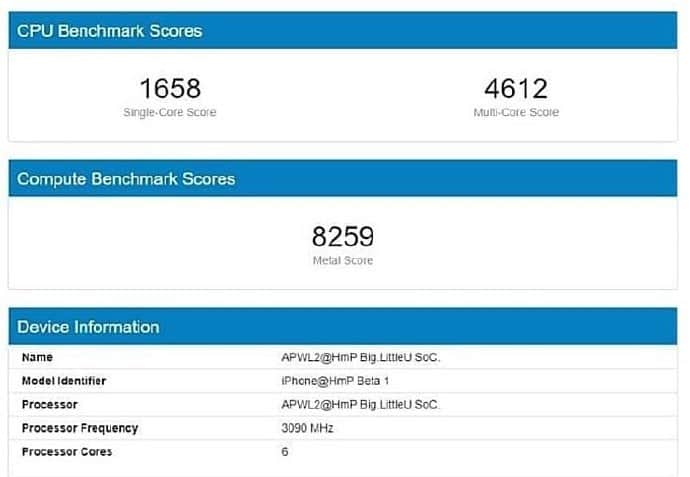The past week certainly excited fans who are waiting for a new generation of consoles. First, Microsoft came out with a good portion of details, followed by Sony two days later. Information about the new consoles, which should arrive sometime during the last quarter of this year, has stirred up the age-old debate about the specifications and which model will be more powerful within this generation.
It could be interest you

Before we get to the consoles, information has emerged from the end of the week about how powerful the upcoming SoCs could be Apple A14. A few have escaped results in the Geekbench 5 benchmark and from them it is possible to read the relative performance of the novelty compared to the current generation of processors found in the iPhone 11 and 11 Pro. According to the leaked data, it looks like the Apple A14 will be around 25% more powerful in single-threaded tasks and up to 33% more powerful in multi-threaded tasks. It is also the first A-processor whose frequencies exceed 3 GHz.

Right from the end of the week, Microsoft took the floor and released it information embargo to your new Xbox Series X. In addition to the official information about the specifications of the new console, it is now possible to see several videos on YouTube that discuss in detail the hardware, the architecture of the new console, the cooling method and much more. After some time, the new Xbox will once again be a relatively powerful console that can be compared with average gaming computers (even though today's consoles are more or less classic computers). The SoC of the new Xbox will have an 8-core processor (with SMT support), tailor-made graphics from AMD with a theoretical performance of 12 TFLOPS, 16 GB of RAM (individual chips with different frequencies and capacities), 1 TB of NVMe storage that will be able be expanded with a proprietary (and probably very expensive) "memory card", Blu-Ray drive, etc. Detailed information can be found either in the printout above or in the attached video from Digital Foundry.
The very next day after this information bomb, Sony announced that they were preparing a conference for fans, at which information about the new Playstation 5 will be revealed. Sony has been relatively tight-lipped about information until this time, and so many fans expected a similar attack. as in the case of Microsoft. However, as it turned out, the opposite was true. Sony has released a presentation that was originally intended for developers at the GDC conference. This was also matched by content that was far more focused on individual elements of the PS5, such as storage, CPU/GPU architecture or audio advancements that Sony has managed to achieve. The naysayers could claim that with this presentation Sony was trying to repair the damage done to them by Microsoft the day before with its announcement. In terms of numbers, it will be Microsoft's console, which should have the upper hand in terms of performance. However, as we could see in the battle of the current generation of consoles, it is definitely not just about performance. From the point of view of specifications, the PS5 should theoretically lag a little behind the Xbox in terms of performance, but the real results will be shown only after testing in practice.
Thousands of people around the world have decided to donate their computing power to a good cause. As part of the Folding@home initiative, they are thus helping to find a suitable vaccine against the coronavirus. Folding@home is a project that Stanford scientists came up with years ago, who could not afford to buy super-powerful computers for complex and demanding computing operations. They thus invented a platform where people from all over the world can join with their computers and thus offer their computing power for a good cause. Currently, this initiative is a huge success and the latest data shows that the entire platform has more computing power than the 7 most powerful supercomputers in the world combined. Joining the project is very easy, z official website you just need to download the application, then you can join a "team", select the desired level of load on your PC and start. A total of six projects are currently underway that focus on COVID-19 in their research. The authors are very open about what the donated computing power is actually used for. On their blog it is thus possible to find a lot of useful and interesting information - for example list individual projects and what each one entails.
